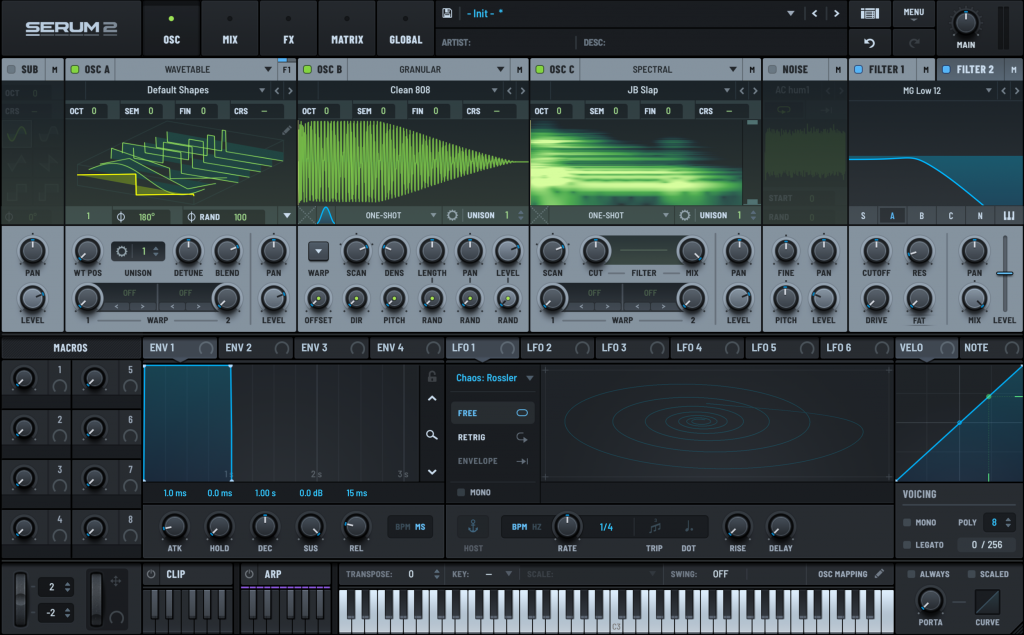
Six Powerful Serum 2 Techniques We Use
Serum 2 is more than just an update — explore six features we use to get the most out of it
Samples can be an endless source of inspiration and creativity. Whether you’re working with a vocal snippet, a drum loop, or a field recording, there are countless ways to transform and manipulate these sounds to fit your unique musical vision. Here are seven creative techniques to inspire your next project.
Description: Pitch shifting involves changing the pitch of a sample up or down. Ableton Live offers different algorithms for this purpose, including Complex, Texture, and Formant.

Tips:
Description: Adding saturation or distortion can add warmth, grit, and character to your samples.

Tips:
Description: LFOs can modulate parameters like volume, pitch, or filter cutoff, creating dynamic movement in your samples.

Tips:
Description: Filters and EQ can shape the frequency content of your samples, from subtle tweaks to dramatic cuts.

Tips:
Description: Granular synthesis breaks down samples into small “grains” and reassembles them, creating entirely new textures.

Tips:
Description: Playing samples in reverse can yield surprising and creative results, turning mundane sounds into unique elements. Often overlooked yet very powerful, especially when combined with other processing!

Tips:
Description: Altering the timing of your samples without affecting pitch can lead to interesting rhythmic and textural effects. Can often create some of the most wacky and unique results from a sample.

Tips:
The essence of sample-based music production lies in its limitless creative potential. By exploring these techniques, you can discover innovative ways to transform your samples and enhance your tracks with original sounds.
Our recommendation is to embrace the process, experiment thoughtfully, and let your creativity guide you where it wants go. Many of our best lightbulb moments in Koherent sound design were by attempting simple techniques such as these.

Serum 2 is more than just an update — explore six features we use to get the most out of it

Discover free VST plugins for drum and bass production in 2025. From powerful synths like Vital to gritty effects like Valhalla Supermassive, elevate your sound without spending a penny

Boost your game: set clear goals, embrace imperfection, and finish strong with these mindful techniques to help finish your music.